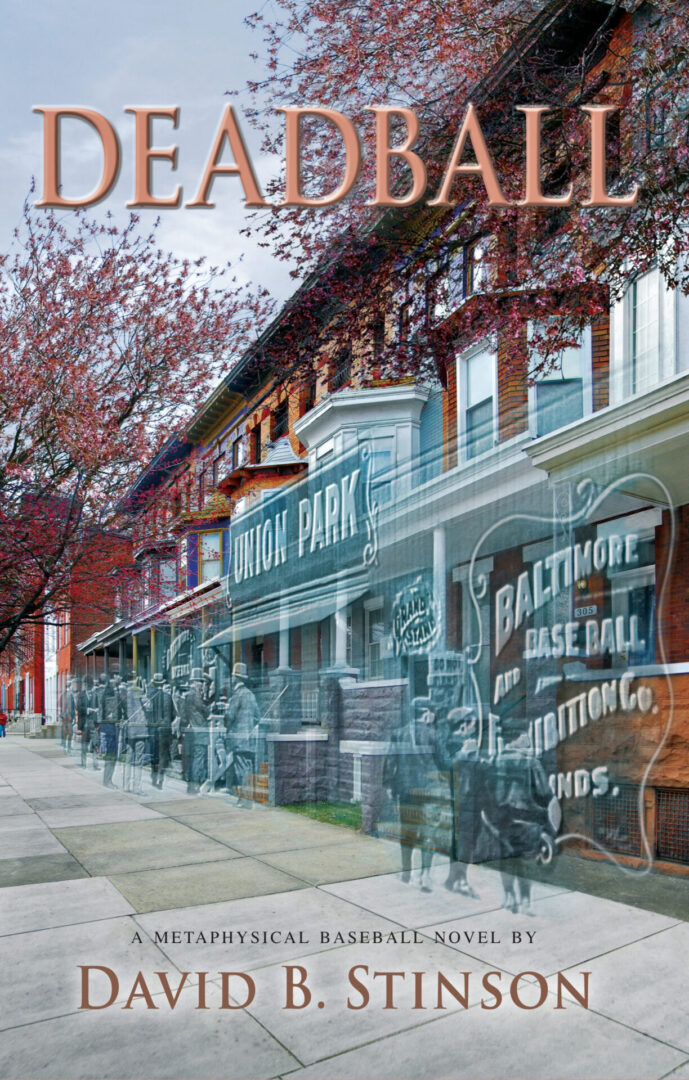Grayson Stadium is located at 1401 East Victory Drive in Savannah, Georgia. Opened in 1926, the ballpark originally was known as Municipal Stadium.
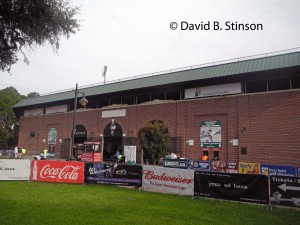
Located in Daffin Park, Grayson Stadium is part of the Daffin Park-Parkside historic district and is listed on the National Register of Historic Places.
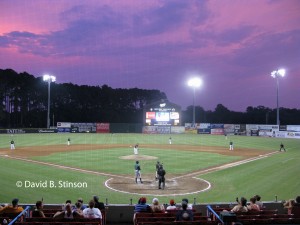
The ballpark is one of the most picturesque in the country. Sadly, it appears professional baseball will be departing Savannah at the end of the 2015 season.
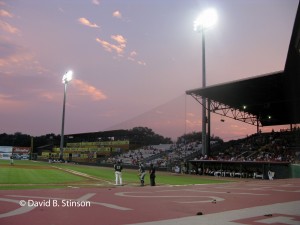
The Savannah Indians of the South Atlantic League played at Municipal Stadium beginning in 1926, through the 1928 season, and returned in 1936.
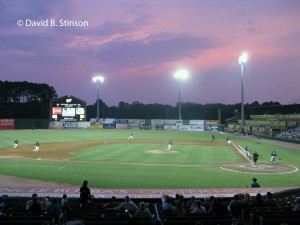
On August 11, 1940, a Category 2 hurricane struck Savannah, destroying a substantial portion of the ballpark. Only two sections of concrete bleachers were left standing.

One of those sections, which once sat beyond left field, was demolished during a renovation of the ballpark in 1995.
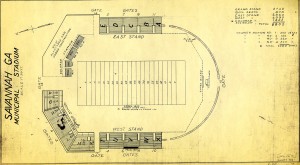
The other concrete bleachers section remaining from the original 1926 ballpark sits along the first base line.


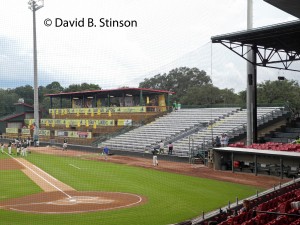
After the hurricane, Municipal Stadium was rebuilt in 1940-1941, under the leadership of Spanish-American War veteran General William L. Grayson, and with funds from the Work Progress Administration.
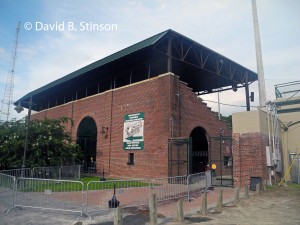
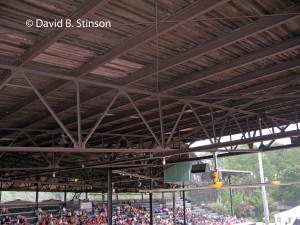
To see additional blueprints of the 1940 renovation, visit armstrongdigitalhistory.org – Grayson Stadium Project.
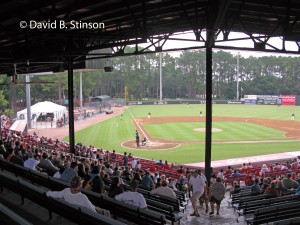
With the ballpark substantially complete in 1941, construction was a halted during World War II.
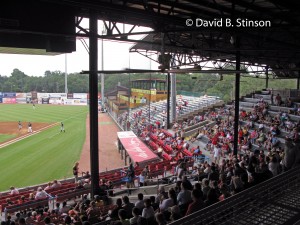
A portion of the third base grandstand remained uncompleted for seven decades, and was finished only recently.

In 1941, the City of Savannah renamed the ballpark in honor of General Grayson, who died that same year.

In 1943, the South Atlantic League suspended operations because of the war and the Indians departed Grayson Stadium. The Indians returned in 1946, playing at Grayson Stadium through the 1953 season.
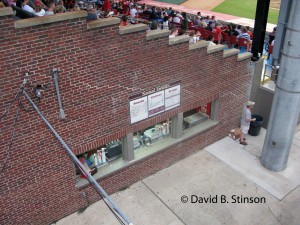
In 1954, Savannah’s South Atlantic League team became an affiliate of the Kansas City Athletics. The team switched its name to the Savannah A’s in 1954. Savannah’s South Atlantic League team switched affiliates several more times, beginning in 1956 with Cincinnati Reds (through 1959), Pittsburgh Pirates (1960, also from 1936 to 1938), and the Chicago White Sox (1962).
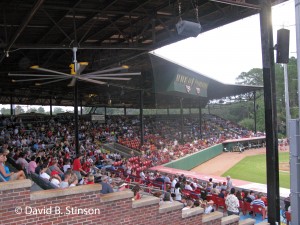
Savannah did not field a team in 1961, and from 1963 to 1967. In 1968 Savannah joined the Southern League as an affiliate of the Washington Senators. The team remained in the Southern League through 1983, with the exception of 1971, when Savannah played in the Dixie Association. In 1969 the Senators and the Houston Astros shared the Savannah affiliate, and, in 1970, Savannah became an affiliate of the Cleveland Indians. From 1971 to 1983, Savannah was an affiliate of the Atlanta Braves.

In 1984, Savannah rejoined the South Atlantic League, as an affiliate of the St. Louis Cardinals, with whom they remained affiliated through the 1994 season. The team changed its name to the Sand Gnats in 1995, and was an affiliate of the Los Angeles Dodgers from 1995 to 1997, the Texas Rangers from 1998 to 2002, the Montreal Expos from 2003 to 2005, the Washington Nationals from 2005 to 2006, and the New York Mets from 2007 to 2015.
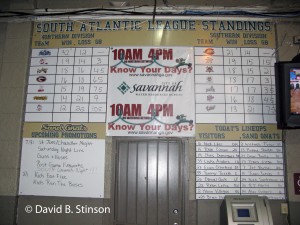
In addition to the Indians and the Sand Gnats, since 1926, Savannah’s minor league team has been known as the A’s, the Redlegs, the Reds, the Pirates, the White Sox, the Senators, the Braves, and the Cardinals.
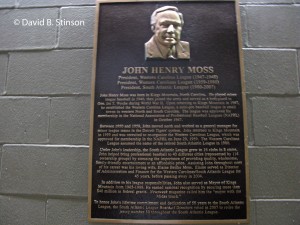
According to Armstrong State University History Department, no Negro League baseball ever was played at Municipal or Grayson Stadium.

As for Babe Ruth, he appeared at least two times at Municipal Stadium: first, in 1927, during a spring exhibition game between the 1926 World Series champions St. Louis Cardinals and the American League champions New York Yankees, which the Cardinals won 20-10; and second in 1935, as a member of the Boston Braves when his team played an exhibition game against South Georgia Teacher’s College, which is now Georgia Southern University. The Braves won that contest 15 – 1, during which Ruth hit a third-inning home run over the fence in right field.
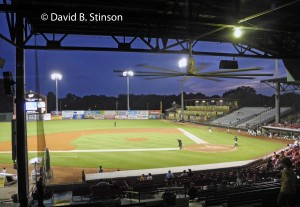
A 1995 renovation to Grayson Stadium was renovated, brought the addition of a press box above the grandstand roof and the demolition of the left field bleachers.
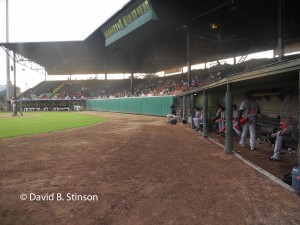
In 2007, another renovation added a new scoreboard in center field.
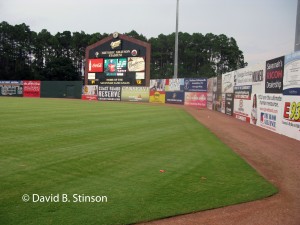

Scoreboard, Grayson Stadium, Savannah, Georgia
For the past several seasons, Savannah’s current minor league affiliate has encouraged the city to construct a new ballpark.
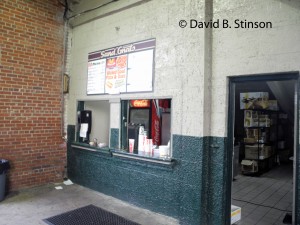
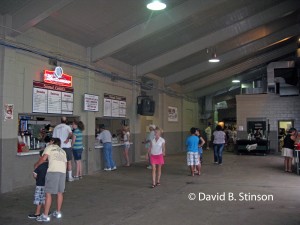
Apparently, the older the ballpark, the louder the drum beat is to replace it. Unfortunately, what fans find quaint about old ballparks, the teams actually playing there find challenging at best.
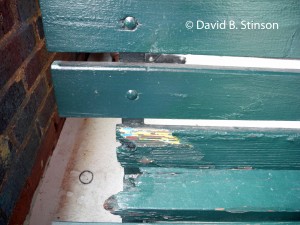
In 2015, the Sand Gnats announced they would be departing Grayson Stadium at the end of the season and relocating to a new ballpark being constructed in Columbia, South Carolina.
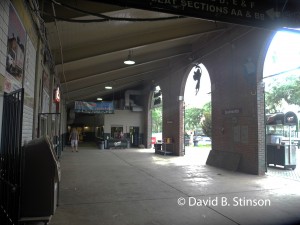
The departure of the Sand Gnats most likely spells the end of professional baseball at Grayson Stadium.
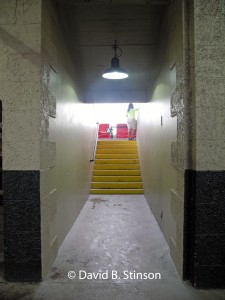
The good news is it appears that a collegiate wooden bat team will be playing at Grayson Stadium beginning in 2016.
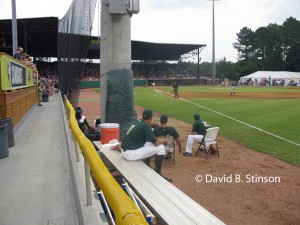
If you want to catch a professional game at Grayson Stadium, the Sand Gnat’s season runs through September 2, 2015.
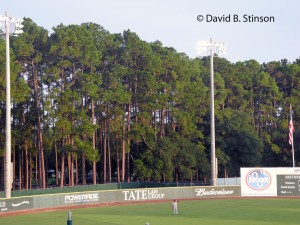
The ballpark most definitely is worth a visit. If you are anywhere near Savannah, and are a fan of the game (which presumably you are or you would not be reading this) be sure to take in a game at Historic Grayson Stadium before professional baseball departs its friendly confines.
